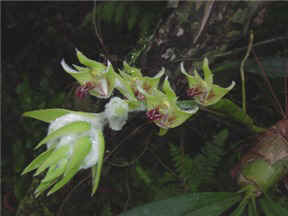


The small yellow flower has a sweet fruity fragrance too. This plants is from G. Ledang, near the summit (900m asl).
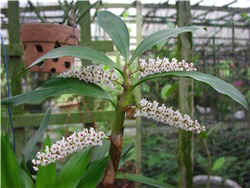
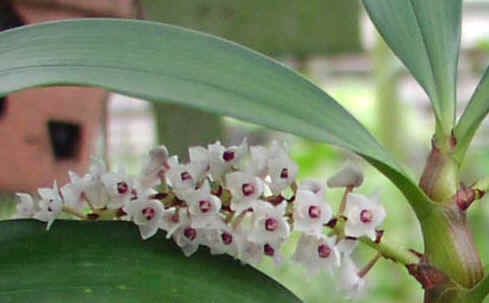
This plant is collected from fallen trunks in Johore lowland, Malaysia.
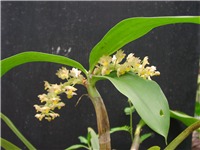
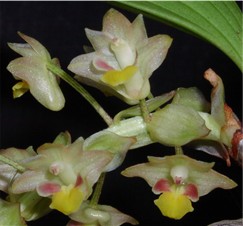
Eria
A large family comprising about 400 species from Continental Asia to Pacific Islands. Members of this family are a motley crew of very diverse characters- from small plants to plants about a metre in height, with big or small pseudobulbs, soft or succulent leaves, some have interesting zig-zag stems and look like Dendrobiums and yet others are covered completely by thick hairs (Trichotosia, sometimes placed in this family). A prime disadvantage horticulturally is that most of them do not flower regularly and the bloom lasts only 2-3 days. In the lowland forest of Malesia, it will be difficult not to find representatives of this family.
|
|
Eria pubescen is a very common species occuring from Southern China through Indo-China to Malaysia, Java and Sumatra. It is also known as E. albidotomentosa - a reference to its white hair on the flower stalk as shown in this photo. The flower is large and attractive - the vegetatitve feature is also interesting, a rather laterally flattened pseudobulb with 4-5 leaves. This photo is taken from Mandai Orchid Garden. |
|
|
Eria
pellipes is one of my favourite in the family - it is a rather slow
growing small species with very distinctive growth habits - the closely
spaced small pseudobulbs terete leaves jutting out like spiralling
rods. It is more common in the higher altitudes.
The small yellow flower has a sweet fruity fragrance too. This plants is from G. Ledang, near the summit (900m asl). |
|
|
Eria pannae is another common species from the lowland - it is closely related to E. peillipes and has similar laterally flattened succulent leaves and larger yellow flower - I have not detected any fragrance from the bloom so far. |
|
|
The
aptly named Eria floribunda is a larger plant with very nice flowering
habit - the many "branches" flowering almost simultaneously.
Alas, the flower lasts only 2-3 days.
This plant is collected from fallen trunks in Johore lowland, Malaysia.
|
|
|
I
think the colouration of the flower in E. xanthochelia is the most
exquisite and pleasing amongst local species. Vegetatively, its very
similar to E. floribunda. It also has a mass flowering habit which
coincide with mass flowering of Dendrobium crumenatum, the pigeon
orchid. This probably means that initiation of flowering is triggered by
sudden drop in temperature (eg in a storm) and is completed by the ninth
day.
|